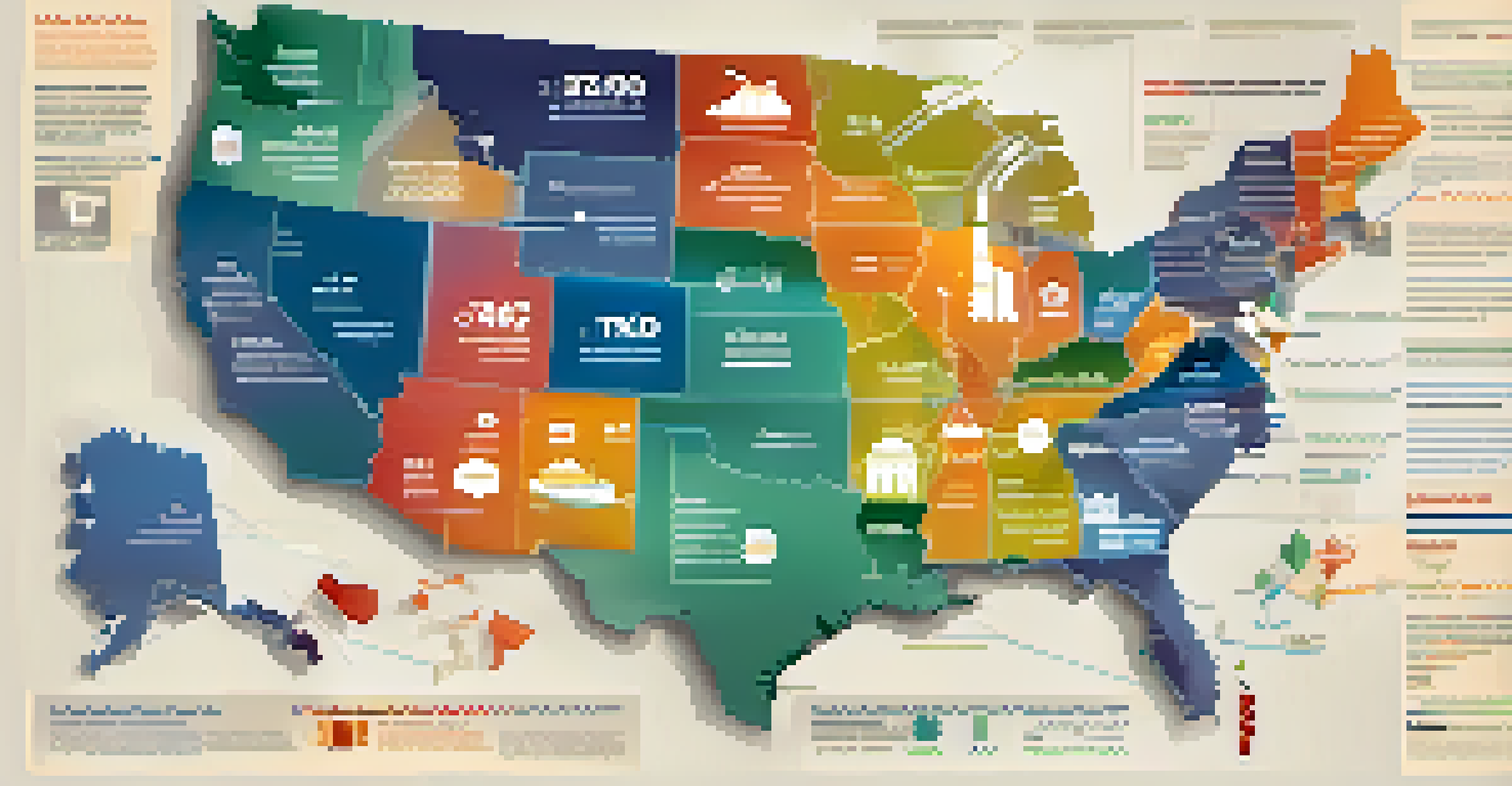Understanding Different Types of Sales Tax Across States

What is Sales Tax and Why Does It Matter?
Sales tax is a consumption tax imposed by the government on the sale of goods and services. It’s essential because it contributes to state revenue, funding public services like education and infrastructure. Understanding how sales tax works can help consumers make informed purchasing decisions and businesses to comply with regulations.
The hardest thing to understand in the world is the income tax.
Different states have different sales tax rates, which can affect where consumers choose to shop. For example, a product that costs $100 in a state with a 6% sales tax will incur a $6 tax, whereas in a state with a 10% tax, the same product will cost $10 more. These differences can influence consumer behavior and even where businesses decide to set up shop.
Moreover, sales tax can vary not just by state, but also by locality. Some cities or counties impose additional taxes on top of the state rate, leading to a patchwork of tax obligations that both consumers and businesses must navigate.
Types of Sales Tax: General vs. Special Rates
Sales tax generally falls into two categories: general sales tax and special rates. General sales tax applies uniformly across most goods and services, whereas special rates may target specific items, like luxury goods or tobacco. Understanding these distinctions helps consumers anticipate additional costs when making purchases.

For instance, in some states, clothing may be exempt from sales tax, while in others, it might be taxed at a lower rate. This can lead consumers to seek out states with favorable tax regimes for specific purchases, such as clothing or electronics.
Understanding Sales Tax is Key
Sales tax impacts both consumer purchasing decisions and business compliance with regulations.
Special rates can also include temporary taxes for specific projects, like infrastructure improvements. These taxes can be a bit tricky, as they may only apply for a limited time, and consumers might not always be aware of their existence.
Sales Tax Rates: A State-by-State Comparison
Sales tax rates vary widely across states, creating a complex landscape for consumers and businesses alike. States like California have some of the highest sales tax rates, while others, like Delaware, have none at all. This disparity can impact everything from shopping habits to business location decisions.
Taxes are what we pay for civilized society.
For example, if a consumer lives in a state with a high sales tax, they may consider shopping online from retailers in no-sales-tax states. This behavior not only affects local businesses but can also lead to significant revenue losses for states with higher tax rates.
Additionally, understanding these differences is vital for businesses that sell across state lines. They must ensure they are compliant with each jurisdiction's tax laws, which can be a daunting task without proper guidance.
Use Tax: What It Is and Why It Matters
Use tax is a complementary tax to sales tax, designed to ensure that consumers pay tax on items purchased out-of-state. If you buy a product in a state with a lower sales tax and bring it home, your state may require you to pay use tax. This is crucial for maintaining fair competition among in-state and out-of-state sellers.
For instance, if a resident of New York buys furniture from a store in New Jersey with a lower tax rate, they could be liable for New York's use tax when they bring it home. This often surprises consumers who may not realize they have this obligation.
Sales Tax Varies by Location
Different states and localities impose varying sales tax rates, influencing where consumers shop and businesses operate.
Understanding use tax is vital for anyone who regularly shops online or travels out-of-state for purchases. Ignoring this tax can lead to unexpected liabilities and potential penalties, so it's best to stay informed.
Exemptions and Deductions: What You Should Know
Many states offer exemptions and deductions that can reduce the overall sales tax burden. Common exemptions include necessities like food, prescription drugs, and certain clothing items. Knowing what qualifies for exemption can lead to significant savings for consumers.
For example, states like New York exempt most clothing and footwear under a certain price point from sales tax. This can encourage spending in local retail stores and support low-income families who rely on these necessities.
However, exemptions can be complex, with specific conditions and limitations. It’s essential for consumers and businesses to stay informed about what qualifies for exemptions to ensure compliance and maximize savings.
The Impact of Online Shopping on Sales Tax
The rise of online shopping has significantly changed the sales tax landscape. In the past, many consumers could avoid sales tax by purchasing online from out-of-state retailers. However, recent changes in legislation, like the Wayfair decision, have shifted this paradigm.
Now, many states require online retailers to collect sales tax, even if they don't have a physical presence in the state. This means consumers may no longer escape the sales tax when shopping online, which could influence their purchasing decisions.
Online Shopping Alters Tax Dynamics
Recent legislation now requires many online retailers to collect sales tax, impacting consumer behavior and local businesses.
As a result, consumers may start to factor in sales tax when comparing prices between local and online retailers. This change not only affects consumer behavior but also levels the playing field for local businesses competing with e-commerce giants.
Future Trends in Sales Tax Legislation
As the economy evolves, so too will sales tax legislation. States are increasingly looking for ways to modernize their tax systems, especially with the growth of the gig economy and digital services. This could mean changes in how sales tax is applied to services or even new types of taxes altogether.
For example, some states are considering taxing digital goods and services, such as streaming subscriptions or e-books. This shift could help states capture revenue from emerging industries, but it also raises questions about fairness and the impact on consumers.

Staying informed about these trends is crucial for both consumers and businesses. As new laws are proposed and enacted, understanding the implications will be key to navigating the changing landscape of sales tax.